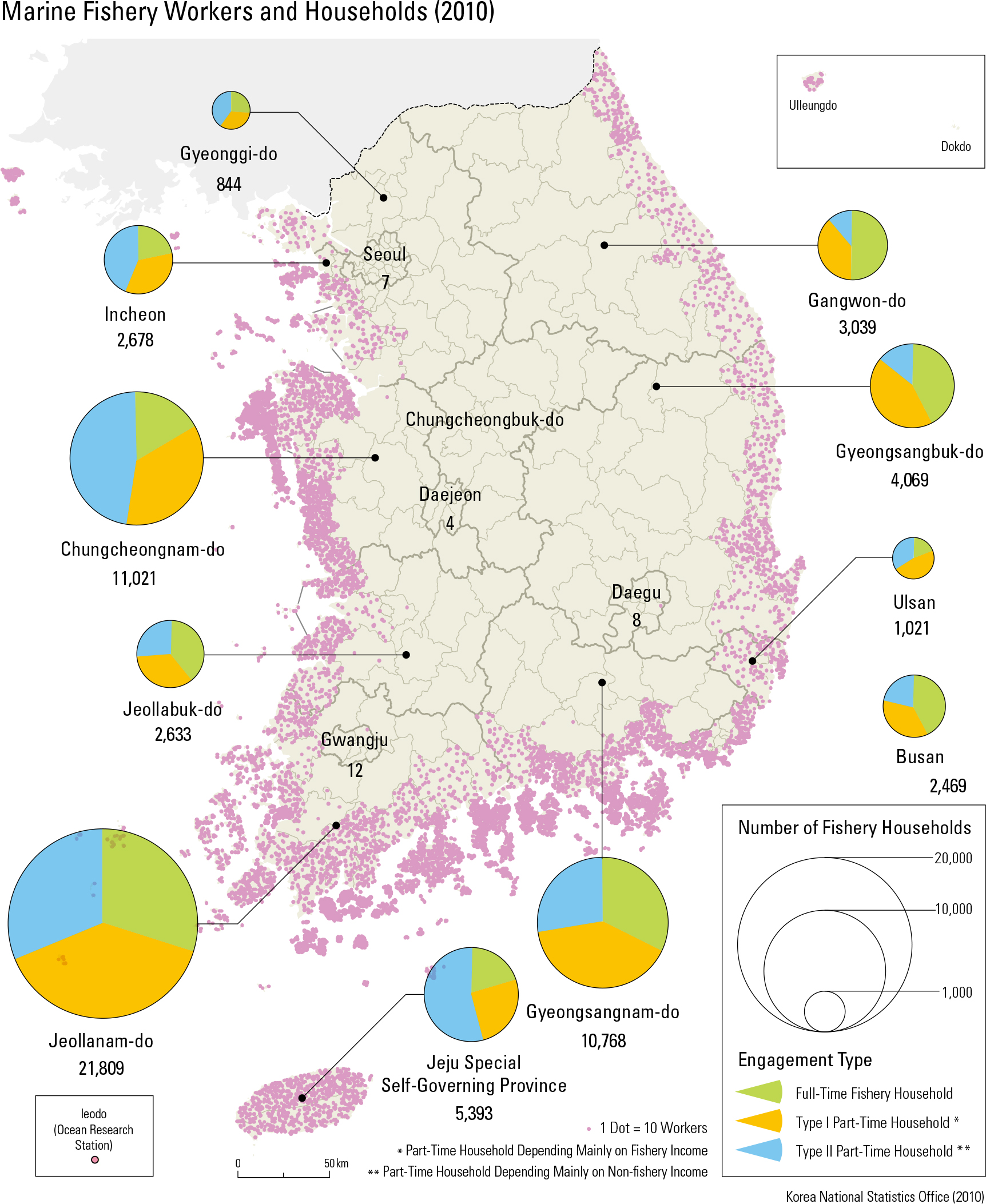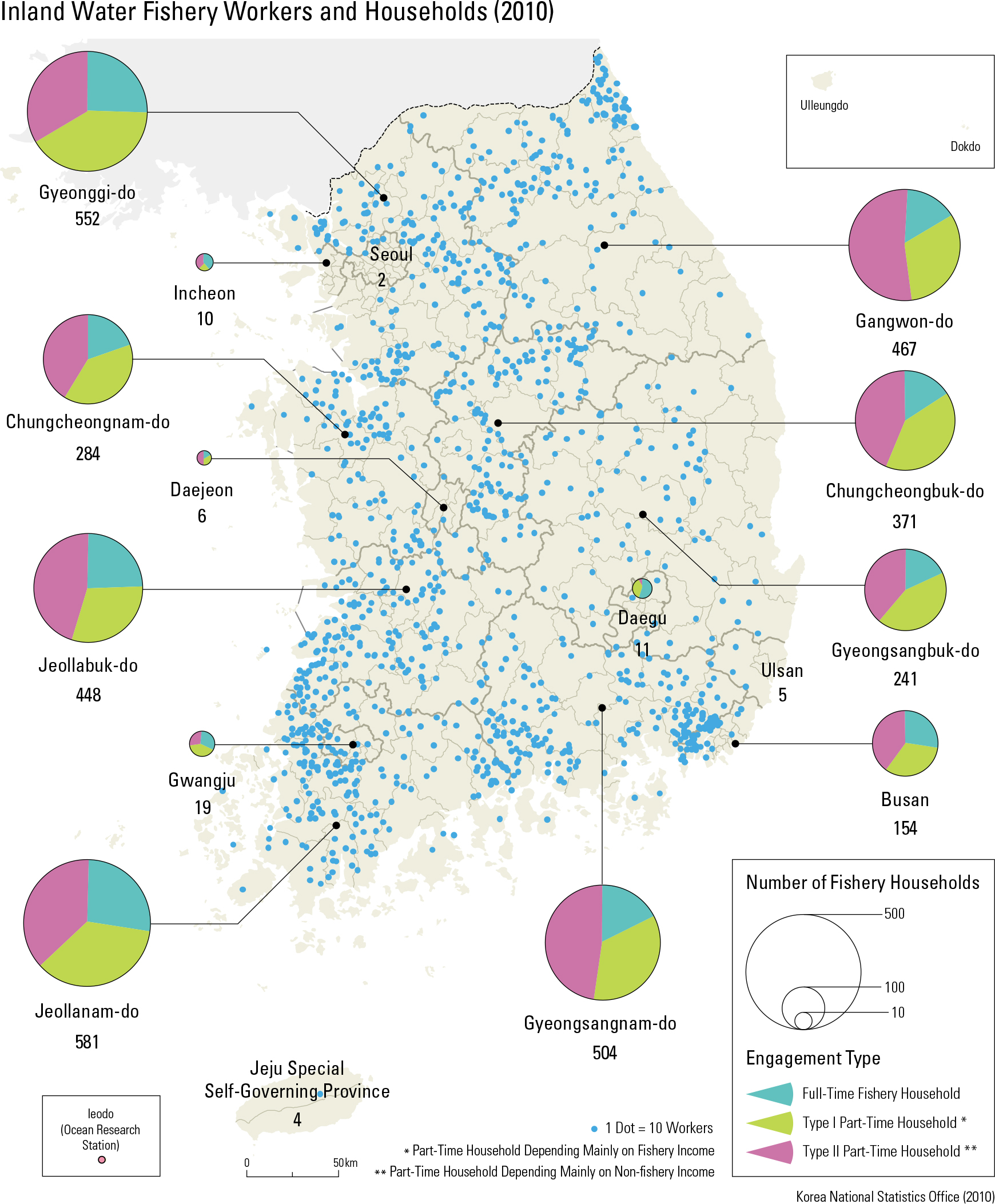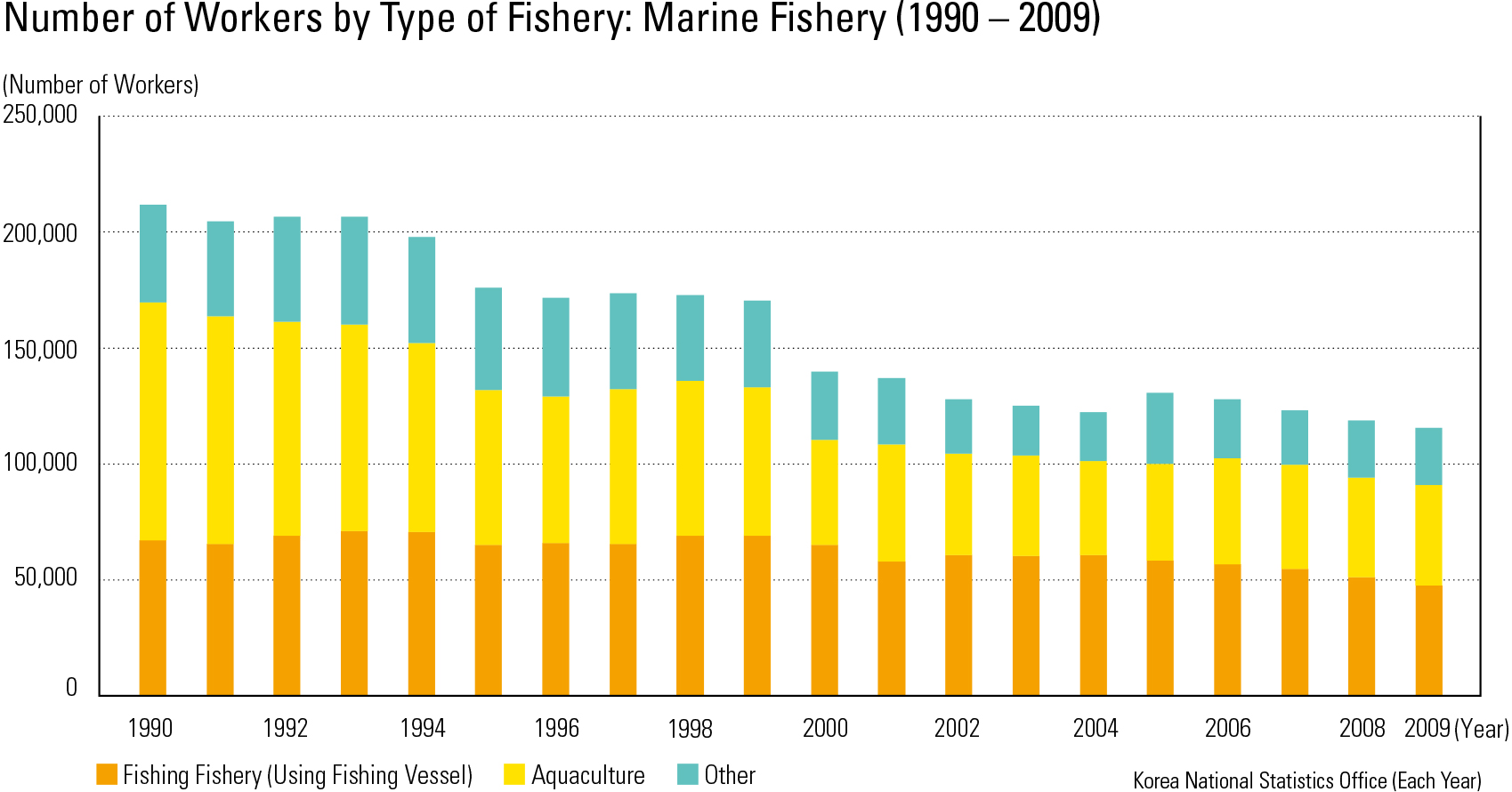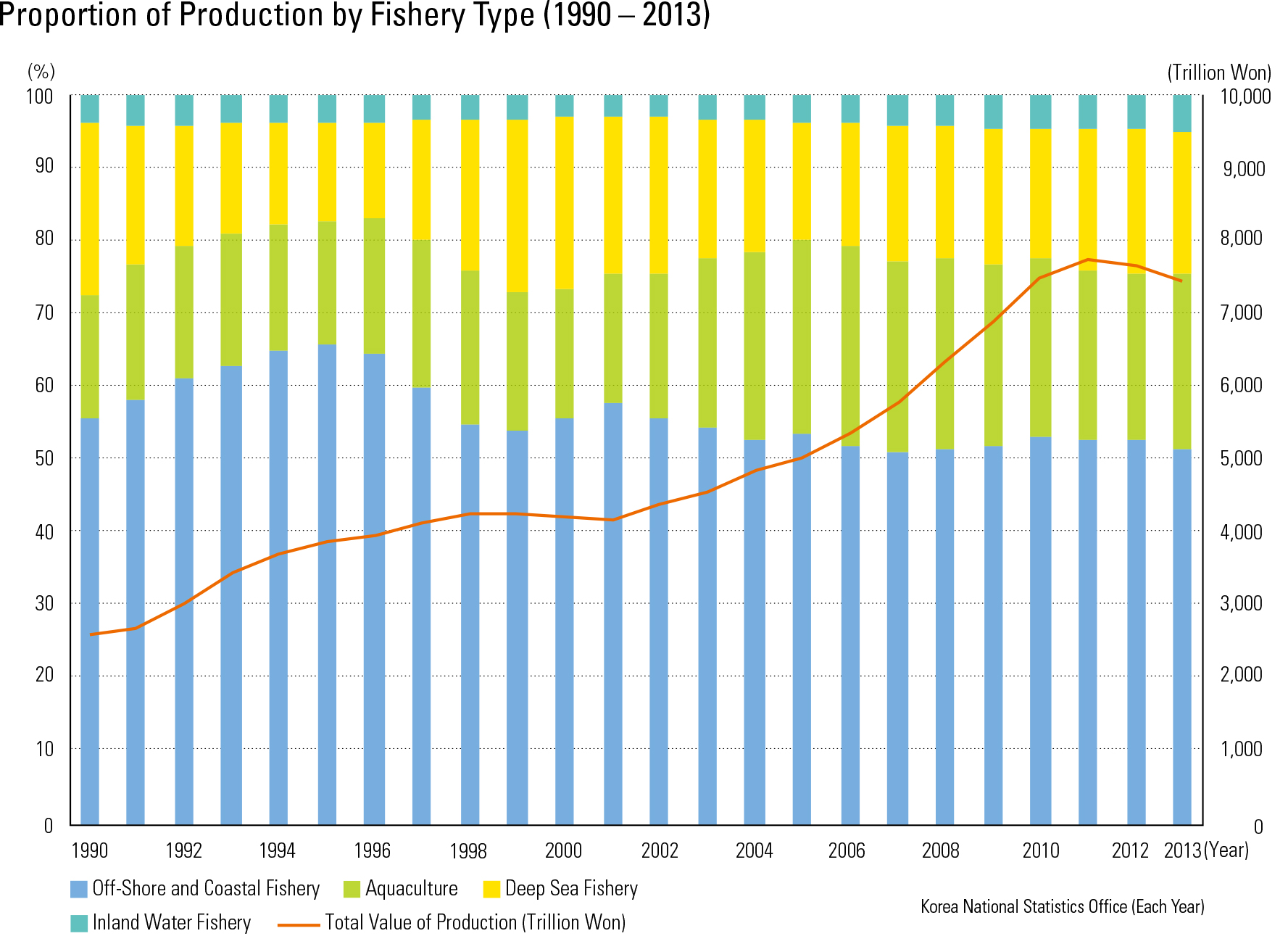English III
The Korean fishing industry has experienced a lot of uncertainties due to the depletion of shing resources and imported fishing products over the last few decades. The decline is more prominent in coastal and deep-sea shing, which have tradition- ally been important in the Korean shing industry. Only after 2000, with a gradual increase in aqua- culture and inland fisheries, has the total fishing industry output and value of production slightly improved. In recent years, however, even the aquaculture industry has begun to decline. This overall depres- sion in the shing industry has caused a persistent decline in the fishing industry population. The number of fishermen employed in offshore or coastal shing in 2010 was reduced to almost half, while the number in the inland shing industry de- clined to about 36% during the same period. This trend is expected to continue in the future because there is hardly any influx of new fishing industry workers, and current fishing industry workers are aging. The average age of managers of shing in- dustry households in 2014 was 62.7 years of age, and the percent of shermen over 65 was 32.2%. Fish businesses overall are still small in scale. The government has tried to limit the number of fishing vessels in an effort to encourage fishing businesses to engage in larger scale operations. As a result, the number of total shing vessels has steadily decreased in the 2000s. Despite the gov- ernments effort, the average tonnage per vessel (T / units) is still less than 10 tons. However, there are many fishing households whose annual sales are growing. In particular, the average aquaculture farm size has increased signi cantly. Another char- acteristic of the Korean fishing industry has been that the proportion of full-time fishing industry employees is very low. Currently, less than 30% of shing industry employees are full-time workers.
page_2 |




